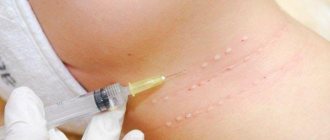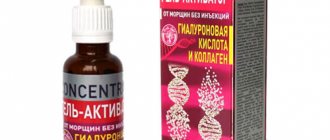What it is?
Hyaluronic peeling is a unique procedure in cosmetology that allows you to clean, moisturize and improve the appearance of the skin. Thanks to hyaluronic acid, the skin gets rid of impurities and dead cells, and pores are deeply cleansed. This type of peeling is unique because it avoids dehydration of the epidermis.
In a short period of time, hyaluronic peeling can truly rejuvenate your skin, without damaging it. Thanks to this procedure, the skin becomes soft, clean and moisturized, and wrinkles begin to gradually smooth out.
HYALURON PEELING IN THE BEAUTY SALON
1 week BEFORE peeling with hyaluronic acid, it is recommended to prepare your facial skin. To do this, we exfoliate dead cells using lotions with a weak content of fruit acids. You can also additionally use hyaluronic care cosmetics.
Procedure protocol step by step:
- Cleansing and degreasing the skin.
- Apply peeling for up to 30 minutes. (Initial sessions require a careful approach and minimal exposure.)
- We neutralize the effect of the hyaluronic reagent with an alkali solution. A slight tingling sensation may be felt.
- Apply a nourishing mask.
- We create a protective barrier using UV cream.
The course usually includes 3-10 sessions.
Price for 1 treatment in the salon: from 15 €. The pricing policy is influenced by the cost of basic hyaluronic preparations, as well as the qualifications of the cosmetologist and the general level of the salon.
Medicinal properties
- Moisture retention. Hyaluronic acid is able to retain a large amount of fluid in the layers of the epidermis, making the skin softer, smoother and more elastic. Due to the high moisture content inside the skin, wrinkles are smoothed out, making the face look younger and more toned.
- This substance can protect the skin from negative environmental influences and helps reduce inflammatory processes, which is why hyaluronic acid is often used in the fight against acne and acne. The substance has excellent disinfecting properties that help get rid of acne and blackheads on the face.
- I would like to note that the substance is often used during the treatment of oral ulcers, as it has a strong anti-inflammatory effect.
- Hyaluronic acid is often used in the fight against joint diseases.
- The substance is very important for the female reproductive system, as hyaluronic acid helps maintain eggs in a healthy state.
- Hyaluronic acid helps in the speedy healing of wounds, abrasions and burns. The substance perfectly disinfects the affected area, promoting faster cell regeneration.
- Thanks to this substance, free radicals are neutralized. This suggests that the risk of malignant tumors is significantly reduced.
We recommend: A popular modern procedure - glycolic peeling: how is it done in the salon and at home? Nuances
Peeling-biorevitalizant for oily and problem skin Anti-Acne Renew Biopeel ↑
Like previous products, the peeling is placed in a bottle made of darkened, impact-resistant glass with a screw-on cap. A distinctive feature of the Anti-Acne peeling packaging is its color scheme, made in green tones.
The texture of the peeling is liquid, gel. The consistency color is transparent. Unlike previous copies, the smell of Anti-Acne peeling is less pungent due to the presence of fruit acids (malic, citric, tartaric, etc.).
The bottle is made of durable dark glass
Peeling has a transparent gel texture
Professional peeling-biorevitalizant Anti-Acne Renew Biopeel
- a confident step towards clear and healthy skin.
Peeling is designed specifically for oily and problematic skin with acne, post-acne, hyperkeratosis, enlarged pores, impaired microrelief, etc. Thanks to a combination of AHA acids at a concentration of 40% and a low pH of 1.5,
the product provides deep cleansing of the skin, reduces hyperkeratosis, and has a sebostatic effect, that is, it normalizes the functioning of the sebaceous glands. Accelerates the process of eliminating inflammation and signs of post-acne, evens out the relief and allows you to increase the depth of penetration of hyaluronic acid, moisturize the skin and level out fine wrinkles caused by dehydration.
The peeling contains 6 AHA acids and low molecular weight hyaluronic acid.
- Tartaric acid
exfoliates, accelerates the regeneration process and slightly whitens the skin. It also cleanses the sebaceous ducts and normalizes excess sebum secretion. - Glycolic acid
penetrates deeply into the epidermis, accelerates cell renewal, stimulates the synthesis of collagen, elastin and glucosamines in the skin. Evens out the texture, smoothes out acne marks, tightens pores and reduces excessive sebum production. - Lactic acid
promotes skin cell renewal, evens out skin texture, improves tone, prevents inflammation, and moisturizes. - Malic acid
tightens pores, fights acne, activates cellular metabolism, relieves inflammation and fights bacteria. - Mandelic acid
has a mild keratolytic effect, dissolves comedones and stimulates the process of cell renewal. - Citric acid
has whitening, bactericidal, antioxidant properties, exfoliates dead epidermal cells, smoothes scars and post-acne marks. - Hyaluronic acid
retains moisture in the deep layers of the skin, ensures optimal water balance, and neutralizes the activity of free radicals. Increases tone and elasticity, smoothes the texture and reduces the number of wrinkles.
| “You need to use Anti-Acne Renew Biopeel peeling to correct hyperkeratosis, because with a thickened stratum corneum it is difficult to use any products and expect results from them. We use peelings for acne exclusively during remission. We relieve the condition and perform peeling. Since the product has a high concentration of acids and low pH, it requires increased attention during the procedure: during application and exposure, never leave the client and carefully monitor the skin reaction.” Yulia Prokopenko, leading technologist-expert |
Method of use in a professional procedure
- Cleanse the client's skin. To do this, you can use facial gel from the new Anti-Acne series
. - Apply the peeling gel with a thin brush to clean, dry skin, starting with the less sensitive areas of the T-zone (chin, nose, forehead). Do not pass the brush more than once over the same area of skin. Apply with caution to areas with rosacea.
- Leave for 1-10 minutes depending on the purpose of the procedure and the sensitivity of the patient's skin. Carefully monitor individual skin reactions.
- At the end of the exposure, apply a neutralizing gel.
- Rinse the mixture off your skin with clean, cool water and soft cloths. If necessary, reapply the neutralizing gel.
- Complete the protocol procedure.
- For home care, you can prescribe anti-acne products from ARAVIA Professional to your client. They will help prolong the results.
A step towards clear, acne-free skin >>
Step-by-step instructions for application from cosmetologists
Preparatory stage
The first step is to thoroughly cleanse the skin and prepare it for the effects of hyaluronic acid. The face is cleansed with an alcohol-free tonic, water or a special disinfectant.
Thanks to this step, residual fat and other impurities are removed from the surface of the epidermis, the upper layers of the skin are softened and some dead particles are removed. It is easier for the main component to pass into open pores, which means that the peeling effect will be as effective as possible.
Application
- The composition is prepared in advance before applying it to the skin. Hyaluronic peeling is a crystalline powder that must be diluted with water to form a gel that resembles liquid sour cream in consistency.
- The resulting composition should be applied to the skin of the face, neck and décolleté.
- The peeling must be left on the face for half an hour so that all components penetrate deep into the epidermis.
- Hyaluronic peeling does not need to be washed off with water; it is removed from the skin surface using special solutions. This helps to avoid injury to the upper layers of the epidermis.
Post-peeling care
- After completion of the procedure, the skin is treated with saline solution. If necessary, apply soothing masks or serums to avoid redness on the skin.
- After completing the procedure, be sure to apply products that provide ultraviolet protection to avoid the appearance of pigmentation on the skin.
- After peeling, you are prohibited from taking salt baths or visiting baths or saunas for a week. You cannot use cosmetics (powder, foundation, etc.) for about three weeks to avoid irritation and inflammation of the skin. Try to avoid direct sunlight on your skin.
We recommend: What is the difference between retinol and retinoic peels? Which procedure should I choose?
How to make at home
It is easy to use HA at home. Use low molecular weight serums and creams. They contain HA and microparticles that easily penetrate the pores.
in its pure form in ampoules or powder . To prepare a gel from powdered hyaluronate, mix 2 g of acid and 30 ml of water (distilled) and refrigerate for 1 hour.
Stir occasionally until lumps disappear. A viscous gel is obtained for 2–3 operations.
Apply the product to previously prepared skin, rub in for 5–10 minutes and wait until completely absorbed. Use before bed for 10–15 days , then you need to take a two-week break.
Several popular recipes for hyaluronic facial peeling.
With hyaluronate
1 ml of hyaluronate is added to 200 ml of cream for any skin type. Apply for 14 days, then interrupt the process for 14-15 days.
Glycerin
Mix 27 g hyaluronate powder, 60 g quinine powder, 30 ml glycerin, 30 g zinc oxide and dilute with water to obtain a thick cream.
Apply the mixture to cleansed skin after 30 minutes. remove it with a towel soaked in warm water.
Apply 2 times a week at night. After 10 procedures - a break for 14-15 days.
With kefir
Add 4 drops of HA from an ampoule to 35 ml of kefir or yogurt. Apply to the treatment site after 15 minutes. remove using a warm compress.
Do facial peeling with hyaluronic acid and kefir 2-3 times a week , but no more than 10 procedures, then a break is required.
BIOREVITALIZATION WITH HYALURONIC ACID
“BIOREVITALIZATION” refers to the correction of aesthetic imperfections in appearance with hyaluronic acid in a broad sense, whether by injection or other means, to form “natural hydration”.
The role of hyaluronic exfoliants in preserving youth is known to many girls. However, we should not forget that preparations based on such components are not a panacea, and for a pronounced rejuvenation effect it is necessary to take comprehensive care of your face.
Cosmetologist Tiina Orasmäe-Meder:
“BIOREVITALIZATION IS USELESS!”
“The same 15 g of dry hyaluronic acid circulates in the body of a healthy young woman until the age of 60, so biorevitalization until then is, by and large, meaningless. The condition of the skin can worsen at any age if you do not make sure that a sufficient amount of water (2 liters) enters the body daily and that its molecules do not evaporate due to poor barrier functions.”
HOME USE
It is also possible to use hyaluronic exfoliants at home. In this case, the whole course fits into 1 quarter (sessions are held 2-4 times a month).
We recommend: WHICH PEELING IS BETTER FOR REJUVENATION: 9 recipes after 30 years
Low-molecular-weight peeling preparations have proven themselves to be the best among glycosaminoglycan-based care products. Particles of such peelings easily penetrate the pores. They are made on the basis of hyaluronate in powder or ampoules.
Peeling with hyaluronic acid usually follows the same principle as in the salon: first, the face is washed with a special exfoliating lotion, and then the main cosmeceutical product is applied.
The algorithm of actions at home is as follows:
- An allergy test is performed on an inconspicuous area of skin.
- The face is degreased with alcohol-free lotion.
- A hyaluronic solution is prepared: a special powder is mixed with water until a gel consistency is obtained.
- The resulting mixture is applied for 30 minutes.
- Neutralized with alkali.
- The face is treated with saline solution to normalize the water-lipid layer.
- Sunscreen is applied.
Additional serum may be applied if necessary.
The skin may turn red after the procedure, but this goes away within 2 hours to 1 day.
In general, recovery between sessions lasts 10 days.
For 3 weeks after peeling with hyaluronic acid, you should not clog pores with decorative cosmetics or exfoliate the epidermis with scrubs.
For 1 week, it is prohibited to sunbathe under the sun or in a solarium or visit the SPA.
Moisturizing with low-fat creams is not prohibited.
Cosmetics during the regeneration period must contain UV filters.
In addition, the composition of care products certainly includes glycosaminoglycans, and dietary supplements based on glycosaminoglycans are sometimes recommended.
Hyaluronic acid after peeling is used to soften and moisturize the epidermis, as well as to prevent fine-plate peeling.
Drug concentration options
The drug is presented in three concentrations
Hyalual 1.1% for young skin. Used to prevent aging. Improves complexion, makes skin less oily, helps fight acne. Good for preparing skin before chemical peels.
Hyalual 1.8% is indicated for skin after 35 years. Provides rejuvenation and lifting of the skin, smoothes out fine wrinkles, improves blood microcirculation.
Hyalual 2.2% is the drug with the highest concentration. Used to smooth out skin texture, replenish lost volume, and correct facial contours.









